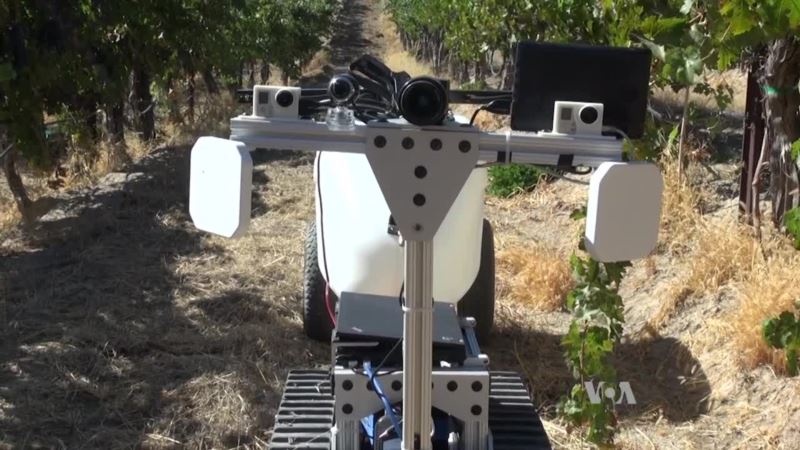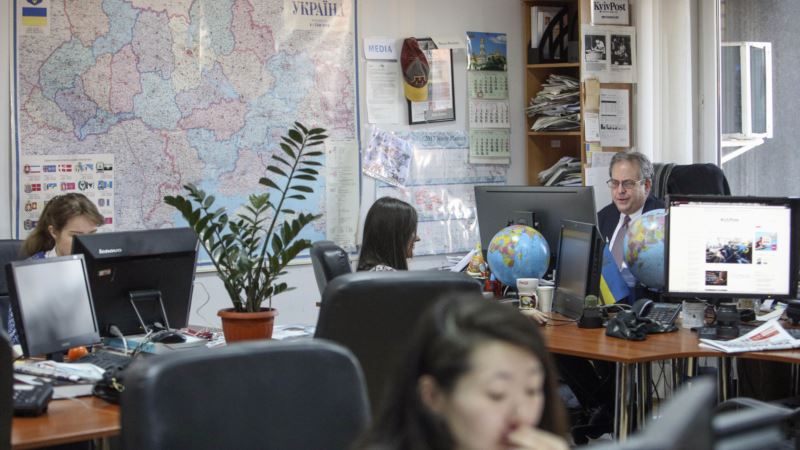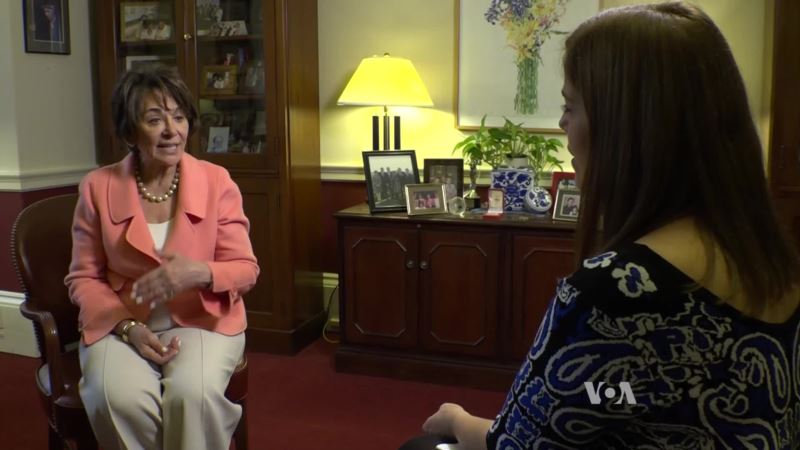It's called IdaBot, and its job is to move through a vineyard or orchard doing the jobs farmers either spend too much time doing, or do too much of. IdaBot is a robot that looks like a tank without a turret, armed not with guns, but with cameras and radio frequency sensors. The prototype was developed by an engineering team at Northwest Nazarene University in Nampa, Idaho. On this day, it's trundling through a vineyard spraying chemicals on specific vines that need treatment. Its other jobs include monitoring and eventually, harvesting crops, all of which are labor and time-intensive tasks for farmers. It works by using radio frequency identification. Josh Griffin, one of the project leaders explained how the robot works. “You can program into the IdaBot, tree number one, tree number five need chemicals." he says. "Each tree will have a radio frequency identification tag on it… The IdaBot will use the signal from the tag to determine which tree it is next to. When it is next to tree five, it will spray chemicals on tree number five, when it is on tree number one, it will spray chemicals there.” The assistant engineering professor at the university says the autonomous robot can be integrated with other technology like monitoring drones. The drone in the experiment carried a multi-spectral camera that captures images of vines or fruit trees for processing in the computer program. The lighter the red in the processed image, the more chemical treatment the trees need. Griffin points out the robot would help farmers save money on labor and create a much smaller chemical footprint than indiscriminate spraying. “It automatically, without human intervention, applies chemicals and it does so in very low pressure. So it does so very precisely. The chemicals go where you want them to go, not over spraying to other areas,” Griffin said. Fruit census The team comprised of students and professors is also developing a Fruit Counting Application that can be integrated into the IdaBot. It is a vision system to accurately estimate fruit crop yield. Duke Bulanon, an assistant engineering professor, who is Griffin’s project partner, said the system will use several cameras — color, near-infrared and stereo cameras — that will take images from each tree as IdaBot moves along the orchard. “Then we will use those images and create a computer program to estimate the number of fruits on each tree,” said Bulanon. Farmers like Michael Williamson, who owns an orchard in Caldwell, Idaho, is looking forward to trying it out. “I am very excited about this experiment and this machine that can count our fruit," he said. “We can get a better price for our customers if we pre-order or pre-sell our fruit months in advance. Sometimes it can be better than 20 percent. And that is the important part about the fruit counting.” Williamson also pointed out other benefits. “If we have an accurate count of the fruit, I can predict how many people I need to harvest. I can predict how much material shipping boxes I need to ship them to their destination. And I can also predict the market.” Griffin estimates a no-frills IdaBot that primarily uses radio frequency identification technology would be relatively low-cost, “kind of on the order of maybe buying a pickup truck or something like that.” The researchers expect the money farmers save using the multipurpose robot will eventually benefit consumers with lower fruit prices.
Idabot Robot Tackles Mundane Farm Tasks






